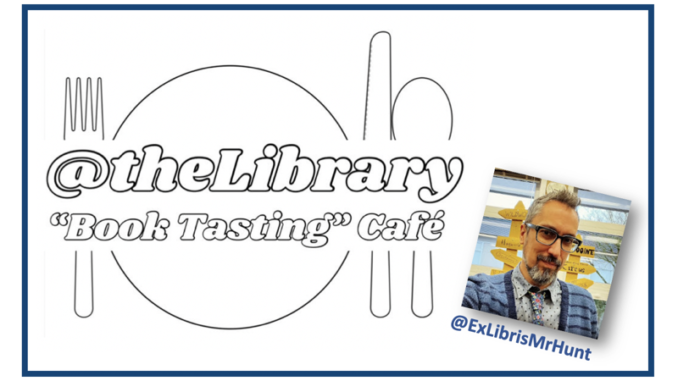
By Christopher Hunt
This article was originally published by Celebrate Nonfiction: Exploring the Joy of Nonfiction Reading and Writing on March 26, 2024, and is reproduced here with permission.
Despite the fact that some prominent publications don’t acknowledge or review children’s nonfiction, it’s an absolute fact that #KidsLoveNonfiction. Anybody in the library world sees proof of it every day. Many student patrons only check out nonfiction, week after week. That’s why I make it my mission to purchase eye-catching nonfiction that looks fantastic on display.
Over the years, the rise of internet research has lessened the need for traditional nonfiction somewhat, motivating publishers to take risks on new kinds of nonfiction with finely-crafted text and incredibly rich artwork. At the same time, books featuring photography have also dramatically increased in artistic quality.
The quality of the information is improving too (whether it’s intriguing tidbits or more in-depth coverage). And trim sizes have increased, which kids just love. I often joke that some of the books are almost as big as the students checking them out. This makes the kids’ eyes light up, and they say, “I know, right! Isn’t that cool?!”
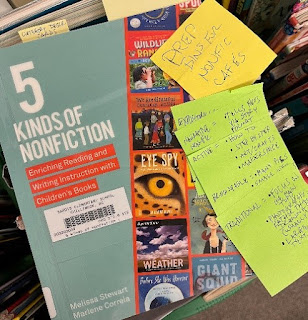
Lightbulb Moment: 5 Kinds of Nonfiction
I’d been noticing all of these changes over the last decade or so, but hadn’t put words to the different formats. Then I started reading social media posts by Melissa Stewart about the 5 Kinds of Nonfiction classification system, and a lightbulb went off. This was a way to talk about what I was noticing. I purchased 5 Kinds of Nonfiction: Enriching Reading and Writing Instruction with Children’s Books, co-authored by Marlene Correia, and immediately knew I wanted to pitch some team-teaching lessons to my colleagues—but where to start?
Teaching Nonfiction Lessons
In the past, I’ve team-taught lessons focusing on nonfiction text features followed by a research and writing project of some sort, but this year, I wanted to move beyond that. My goal was to teach students (and teachers) to recognize the 5 Kinds of Nonfiction (Traditional, Active, Browsable, Expository Literature, and Narrative), so they had the vocabulary to identify book characteristics and could understand the best ways to use each category of book. Traditional nonfiction is well suited for the early stages of research, while browsable books work better later in the process. Expository literature makes great mentor texts for informational writing, while active nonfiction is perfect for modeling procedural writing.
I decided to start with genre tastings. In the past, I’d transformed the library to look like a restaurant with tables that feature “taste test” bins of fiction genres such as realistic fic, sci-fi, fantasy, scary stories, etc. Each participant used a “menu” to make notations about the genres they sampled. This year, I created a 5 Kinds of Nonfiction Tasting Café instead. As soon as I let grade 3, 4, and 5 teachers know that I’d earmarked a half dozen blocks for this exploration, they began signing up their classes.
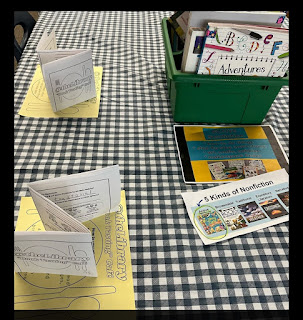
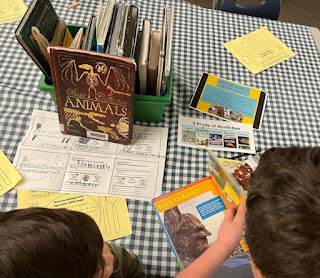

Set Up for the 5 Kinds of Nonfiction Book Tasting Café
- Already had checkered tablecloths and placemats
- Pulled books and binned them according to category
- Made table signs explaining each of the 5 types in student-friendly language
- 5 tables, a bin and 5 place settings at each table
- Menus for students to record their observations, accordion folded, ready on place settings as a class arrives
- Low lightsand/or quiet music, if you wish
- Rotating stations, approximately 8-10 min at each one
- Time at the end to vote on a super fave title from the exploration and sign it out as a bonus
- Students keep menus for next visit to the library to help them find/remember other fave titles

Reflections and Next Steps
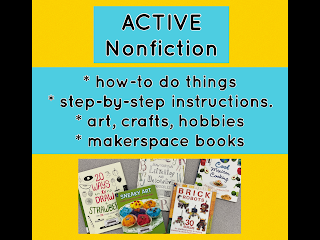
Active nonfiction has always been popular at my school, so I’ve had a separate space for these books in my makerspace area for quite a few years. This category includes how-to books and anything related to hands-on creating—arts and crafts, sewing, coding, drawing, magic, origami, Illustoria magazines, Minecraft, LEGO, cookbooks. It was no surprise that many students loved books at that station. Because this activity highlighted the full range of active nonfiction in our collection, some students tried out something new afterward.
I noticed a strong appreciation for the narrative nonfiction books across the ages/grades. They seem to hit a sweet spot by blending intriguing facts, inspiring artwork, and interesting storytelling. Often, students who are less excited about nonfiction liked this category best; whereas, kids who are less excited about fiction really enjoyed the narrative mode applied to something packed with facts.
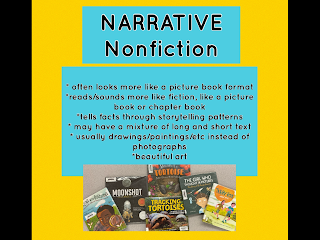
Because narrative nonfiction books seemed to have the most crossover appeal, I decided they should be easier for students to find. I’m planning to pull these titles from their current locations and create a new home for them make them between the picture book corner and the nonfiction corner. Then I’ll put up signage and promote this section. As the books get settled into their new home, I’ll change their sublocation in the system to Narrative Nonfiction Section, so they remain easy for staff and students to track down.
Enhancing the 5 Types Learning Next Time Around
These book tasting were one-off lessons to increase exposure to and appreciation of the different types of nonfiction. I’d like to do follow-up lessons in which students sort random piles of nonfiction books into the five categories. Getting them to explain their logic would be good practice. Luckily, there are excellent model lessons on this (and much more) outlined by Stewart and Correia in 5 Kinds of Nonfiction.
Another possibility is combining a text features lesson a five types exploration. This could be followed by a research-writing-illustration project on a nonfiction topic of each student’s choosing. Going forward, I hope to plan whole-term projects with a class or two to accomplish this sort of scaffolded learning over time.
Another wondering about the future: With narrative nonfiction now being shifted into a separate section and active nonfiction already separated out in the makerspace, do I want to shift or label the remaining three kinds of nonfiction in some way? I’m not sure.
At any rate, this experience highlights several things that I’m always saying about #LibraryLife:
- The library is an ever-evolving space
- Every day and every year in teacher-librarianship is different, full of the spice of life
- Kids love nonfiction, and we need more recognition of that fact!

Christopher Hunt is teacher-librarian at a K-5 elementary school in B.C., Canada. He can be found on social media platforms under the handle @ExLibrisMrHunt with this as his bio: Fan of hands-on integrated STEAM learning; loves graphic novels; kidlit fanboy; inclusive collection a must; he/him; community organizer on the side.